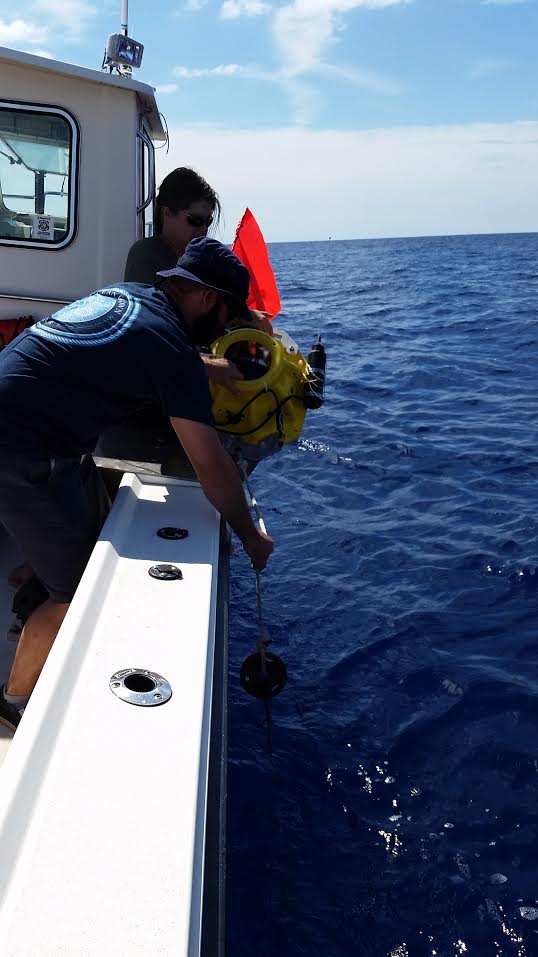100th successful dropsonde cruise for the Western Boundary Time Series project
On October 15, 2015, the scientists, technicians and engineers involved in the PhOD Western Boundary Time Series (WBTS) project completed the 100th successful dropsonde cruise in the Florida Current since the project began in the year 2000.These ship sections are used to monitor the calibration of the Florida Current volume transport measurements made via an out-of-service telephone cable between Florida and Grand Bahama Island. The sections use an oceanographic instrument called a dropsonde (not to be confused with the atmospheric dropsonde) has been used since the 1960s, but the modern version was pioneered at AOML in the mid-1990s via the introduction of a GPS receiver inside the dropsonde. Further improvements over the years have led to a very robust instrument that provides us with highly accurate estimates of depth-averaged ocean velocity. Collecting 100 dropsonde cruises over the past 15 years for the WBTS project has been an effort of many, from the engineers who build the dropsondes, to the technicians who process the data, to the numerous engineers and technicians who go to sea to collect the data on small boats every year. The engineers and technicians who have built, deployed, or processed the data over the past 15 years include: Doug Anderson, David Bitterman, Paul Dammann, Pedro DiNezio, Shaun Dolk, Craig Engler, Rigo Garcia, Ben Kates, Jeff Kelley, Nelson Melo, Jose Ochoa, Pedro Pena, Grant Rawson, Uli Rivero, Robert Roddy, Kyle Seaton, Tom Sevilla, and Andy Stefanick. Some of these people are no longer working at AOML, but the contributions that they made have helped build this great time series and have helped us reach this milestone.

Figure caption: PhOD member Andy Stefanick deploys the dropsonde together with one of the ship crew at one of the stations during the 100th successful dropsonde cruise on October 15, 2015.